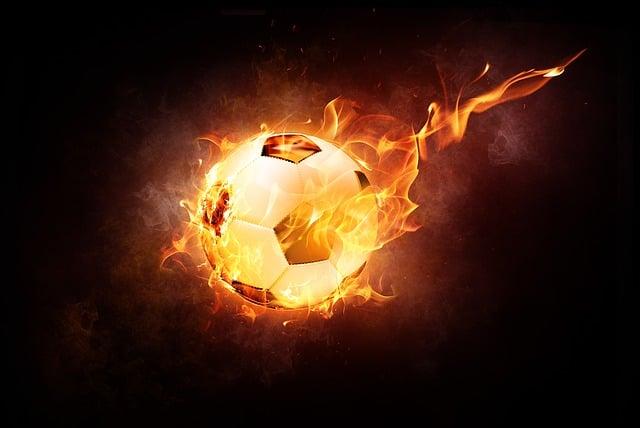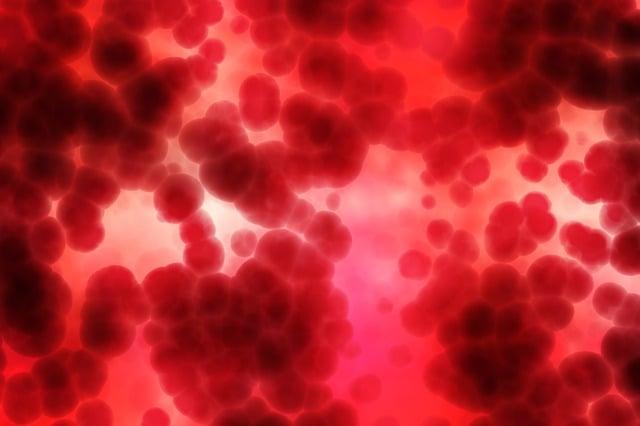Discover how the speed of ball recovery in soccer can be a game-changer for players and teams. Uncover the tactics and strategies behind this crucial aspect of the game.
Contents
- Understanding the Importance of Ball Recovery Time in Soccer
- Factors Affecting Ball Recovery Time on the Field
- Enhancing Defensive Strategies to Optimize Ball Recovery Time
- Utilizing Data Analysis to Improve Ball Recovery Efficiency
- The Psychological Impact of Quick Ball Recovery in Soccer Matches
- Training Techniques to Sharpen Players’ Ball Recovery Skills
- Strategies for Maintaining High Pressure and Quick Transitions in Ball Recovery
- Measuring the Impact of Ball Recovery Time on Team Performance
- Maximizing Ball Recovery Time to Gain Tactical Advantage in Soccer Matches
- Final Thoughts
Understanding the Importance of Ball Recovery Time in Soccer

Ball recovery time in soccer is a crucial aspect of the game that often goes unnoticed by casual observers. However, for coaches and players who understand the importance of quick transitions and regaining possession, it can be a game-changer. When a team loses the ball, how quickly they are able to win it back can dictate the flow of the game and ultimately determine the outcome.
Having a high ball recovery time is not just about winning back possession, but also about disrupting the opponent’s rhythm and forcing them into making mistakes. By pressing aggressively and efficiently after losing the ball, a team can create opportunities to counter-attack and catch their opponents off guard. Additionally, a quick ball recovery time can put pressure on the opposition, leading to turnovers in dangerous areas and more scoring chances for the team looking to regain possession. Teams that prioritize ball recovery time as a key component of their strategy are often able to control the tempo of the game and dictate play on the field.
Factors Affecting Ball Recovery Time on the Field

can greatly impact the outcome of a soccer match. One crucial aspect is the positioning of players on the field. Defensive players who are well organized and positioned strategically are more likely to intercept the ball quickly and regain possession for their team. On the other hand, poor defensive positioning can lead to longer recovery times, allowing the opposing team more opportunities to attack.
Another important factor is player agility and speed. Players who are quick on their feet and can swiftly change direction are more likely to close down opponents and win back possession faster. Additionally, communication among teammates plays a key role in speeding up ball recovery time. Effective communication can help players anticipate each other’s movements, leading to quicker interceptions and turnovers. In conclusion, a combination of factors such as defensive positioning, player agility, and communication are essential in determining how quickly a team can recover the ball on the field.
Enhancing Defensive Strategies to Optimize Ball Recovery Time

By implementing effective defensive strategies in soccer, teams can significantly reduce the time it takes to recover the ball, ultimately gaining a competitive advantage on the field. One key tactic is pressing high up the pitch to apply pressure on the opposition and force turnovers in dangerous areas. This not only disrupts the opponent’s build-up play but also allows for quick transitions into attacking opportunities.
Additionally, utilizing a well-organized and cohesive defensive structure can help in regaining possession efficiently. This involves strong communication among players, maintaining proper positioning, and anticipating the opponent’s movements. By working collectively to cut off passing lanes and apply pressure on the ball carrier, teams can effectively limit the time and space their opponents have to make decisions, leading to increased chances of winning back possession.
Utilizing Data Analysis to Improve Ball Recovery Efficiency

In soccer, the efficiency of ball recovery is a crucial aspect that can greatly impact the outcome of a game. By utilizing data analysis, teams can gain valuable insights into the performance of their players and make informed decisions to improve their ball recovery efficiency. One key metric that is often analyzed is the average time it takes for a player to recover the ball after losing possession.
Through analyzing this data, coaches and analysts can identify patterns and trends in the players’ behavior and positioning that may be hindering quick ball recovery. By pinpointing areas of improvement, teams can implement specific strategies and drills to enhance their players’ ability to regain possession more efficiently. Additionally, data analysis can also help teams identify potential weaknesses in their opponents’ ball recovery tactics, allowing them to exploit these opportunities during gameplay. By leveraging data analysis to optimize ball recovery time, teams can gain a competitive edge on the field and increase their chances of success.
The Psychological Impact of Quick Ball Recovery in Soccer Matches

Quick ball recovery in soccer matches can have a significant psychological impact on both the players and the fans. When a team is able to quickly regain possession of the ball, it not only boosts their morale but also puts pressure on the opposing team. This can lead to a shift in momentum and create opportunities for scoring goals. Players who excel at quickly recovering the ball often display a high level of determination, focus, and teamwork.
The psychological impact of ball recovery time in soccer matches can also affect the fans in the stands or watching at home. Seeing their favorite team constantly pressuring the opposition and winning back possession quickly can increase their excitement and belief in their team’s ability to win. It creates a sense of anticipation and keeps the fans engaged throughout the game. Additionally, quick ball recovery can demoralize the opposing team, leading to a psychological advantage for the team that excels in this aspect of the game.
Training Techniques to Sharpen Players’ Ball Recovery Skills

When it comes to soccer, ball recovery skills are crucial for a team’s success on the field. By sharpening these skills, players can quickly regain possession of the ball and maintain control of the game. One effective training technique involves focusing on agility and quick reaction time. By incorporating drills that require players to sprint, change direction, and react to sudden changes in the game, they can improve their ability to recover the ball efficiently.
Another key aspect of ball recovery training is emphasizing the importance of anticipation and reading the game. Players should be encouraged to anticipate the opponent’s moves and position themselves strategically to intercept passes or capitalize on loose balls. By honing their ability to read the game, players can anticipate potential opportunities for ball recovery and act decisively. Incorporating these training techniques into regular practice sessions can make a significant difference in a team’s performance on the field.
Strategies for Maintaining High Pressure and Quick Transitions in Ball Recovery

One key strategy for maintaining high pressure and quick transitions in ball recovery is to ensure that players are constantly communicating on the field. Effective communication can help players coordinate their movements and anticipate where the ball might go next, allowing them to apply pressure on the opponent and win back possession swiftly. Encourage your players to use verbal cues, hand signals, and even eye contact to communicate effectively during game situations.
Another important aspect to consider is the ability of your players to anticipate the flow of the game and position themselves strategically to intercept passes or capitalize on mistakes made by the opposition. This requires a high level of awareness and quick decision-making skills, so be sure to emphasize the importance of staying focused and alert at all times. Encourage your players to constantly scan the field, assess the positioning of the opponents, and adjust their own positioning accordingly to create opportunities for successful ball recoveries. By combining communication with anticipation and strategic positioning, your team can improve their ball recovery time and gain a competitive edge on the field.
Measuring the Impact of Ball Recovery Time on Team Performance

Ball recovery time in soccer is a crucial factor that often goes unnoticed but can have a significant impact on a team’s overall performance. The time it takes for a team to regain possession of the ball after losing it can dictate the flow of the game and ultimately determine the outcome. By analyzing and understanding the implications of ball recovery time, teams can strategically improve their gameplay and increase their chances of success.
Factors such as pressing intensity, defensive positioning, and player fitness all play a role in determining how quickly a team can recover the ball. When a team is able to win back possession quickly, they can launch counterattacks, regain control of the game, and put pressure on the opposing team. On the other hand, a slow recovery time can allow the opposing team to maintain possession, build attacking momentum, and ultimately score goals. By focusing on reducing ball recovery time through tactical training and strategic adjustments, teams can gain a competitive edge and improve their overall performance on the field.
Maximizing Ball Recovery Time to Gain Tactical Advantage in Soccer Matches

When it comes to gaining a tactical advantage in soccer matches, one key factor that often goes unnoticed is maximizing ball recovery time. This crucial aspect of the game can make a significant difference in the outcome of a match, as the team that is able to regain possession quickly puts themselves in a great position to launch quick counterattacks and create scoring opportunities.
By focusing on improving ball recovery time, players can disrupt the opponent’s rhythm, force turnovers, and capitalize on the moments when the other team is vulnerable. Here are some strategies to help maximize ball recovery time on the field:
- High Pressing: Implement a high pressing strategy to put pressure on the opponent’s defense and midfield, making it difficult for them to play out from the back.
- Team Coordination: Work on coordinating as a team to anticipate opposition passes and angles, allowing for quick interceptions and regaining possession.
- Quick Transition: Focus on transitioning quickly from defense to attack when winning the ball back, catching the opponent off guard and exploiting their defensive shape.
Final Thoughts
In conclusion, understanding the importance of ball recovery time in soccer can be a game-changer for teams. Quick transitions and efficient pressing can lead to more scoring opportunities and defensive stability. Remember, every second counts on the field!


![How Long is a Soccer Game? [Pro/College/HighSchool/Youth] 12 how long is a soccer game?](https://stmichaelssoccer.com/wp-content/uploads/2022/10/how-long-is-a-soccer-game-150x150.jpg)
